
Eco-Friendly Packaging for Small Business UK in 2024
With the UK increasing awareness of climate change, growing pressure is being placed on businesses to go green.
| January 01 0001The eco-friendly packaging concept revolves around using materials and processes that are significantly less harmful to the environment.
With the UK increasing awareness of climate change, growing pressure is being placed on businesses to go green.
The problem? Many small businesses in the UK don’t know where to begin:
- What types of eco-friendly packaging are most suitable for their products?
- Which suppliers should they choose?
- How will these changes affect their operational costs?
However, they also fail to realize that this approach not only helps reduce the ecological footprint but also caters to a growing demographic of consumers who prioritize sustainability in their purchasing decisions.
Are you a small business owner in the UK looking to align your operations with consumer expectations and environmental goals?
To address these challenges, B&P Wholesale offers comprehensive eco-friendly packaging solutions tailored for small businesses.
B&P Wholesale is an eco-friendly food packaging supplier with over 40 years of dedication to the green packaging initiative.
We provide sustainable solutions for many businesses across the UK with the most affordable options. Our extensive experience enables us to offer insights grounded in deep industry knowledge and a forward-looking approach to eco-friendly practices.
Key takeaways of this article:
- Eco-friendly packaging resonates with consumers who prefer sustainable brands, enhancing your brand image. 82% of UK consumers believe that businesses must be responsible for protecting the environment.
- Material Matters: Opt for recycled cardboard, bioplastics, and plant-based alternatives to innovate your packaging strategy affordably. Most plastics need hundreds of years to degrade.
- Supplier Savvy: Select suppliers who align with your environmental goals and provide innovative, sustainable solutions.
- Regulatory Compliance: Stay informed about UK packaging regulations to ensure compliance and avoid penalties, enhancing operational stability.
- Going Green = More Green: Implementing sustainable packaging can lead to long-term savings by reducing waste and reliance on costly non-renewable materials.
Read on as we discuss each point.
Why Small Businesses in the UK Should Transition to Eco-Friendly Packaging
For small businesses in the UK, the shift toward eco-friendly packaging is becoming increasingly urgent. This is because of 2 things:
- Legislative Reasons
- Consumer Demands
1. Legislation Reasons
With the introduction of the Plastic Packaging Tax in 2022, it has become more economically favorable for businesses to choose recycled materials. UK’s target is to achieve net-zero emissions by 2050.
Therefore, by adopting sustainable practices, businesses can enhance their brand image, meet regulatory standards, and appeal to the eco-conscious shopper.
New Regulatory Requirements: 2023 Changes
Is your business prepared for the UK Packaging Regulations effective March 1, 2023?
Small businesses need to be aware that, as of March 2023, they are required to track and report specific data on the packaging they place on the market. This regulation marks a significant shift towards more detailed accountability in packaging usage, aiming to enforce the Extended Producer Responsibility (EPR) scheme.
How to Comply with the Latest Regulations
Beyond the Plastic Packaging Tax, navigating the landscape of UK regulations involves a detailed understanding of compliance requirements, which might include:
- Recycling Content: Ensuring that all packaging materials meet or exceed minimum recycled content thresholds.
- Labeling Requirements: Regularly updating packaging to comply with consumer information standards, ensuring transparency and compliance.
- Material Restrictions: Staying informed about restrictions on certain materials and adapting packaging choices accordingly.
- Legislative Updates: Keeping abreast of changes in legislation to ensure ongoing compliance.
B&P Wholesale’s expertise in complying with UK packaging regulations is built on decades of hands-on experience, ensuring that our guidance is not only practical but also immediately applicable for small businesses aiming to meet or exceed these standards.
2. Consumer Demands
According to a survey by YouGov, 82% of UK consumers believe that businesses must be responsible for protecting the environment, and 75% are willing to pay more for sustainable products.
This shift in consumer behavior presents a unique opportunity for small businesses to not only meet market demand but also enhance their brand image and customer loyalty through environmentally conscious choices.
Best Eco-Friendly Packaging for Food Products
When selecting materials, consider options that minimize environmental impact without compromising on quality. Here are some top choices:
1. Bagasse Food Boxes and Trays
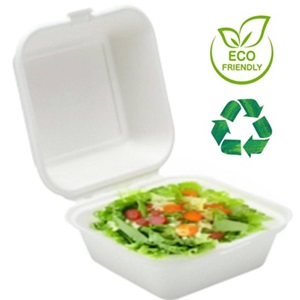
Benefits:Made from the fibers of sugarcane, these containers are compostable and more robust than many traditional paper options, handling various foods without issue.
Applications:They are particularly suited for food service businesses looking for responsible disposables that don't compromise on quality.
2. Bagasse Plates and Bowls
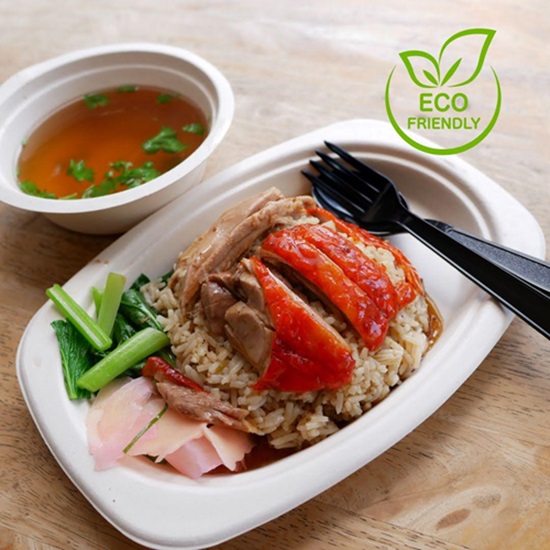
Sugarcane Plates and Bowls from B&P Wholesale
- Benefits:These lightweight yet durable products decompose naturally and can significantly reduce your business's waste.
- Applications: Perfect for restaurants, cafes, and events that require disposable plates and bowls that are environmentally friendly.
3. Compostable Hot Cups and Lids
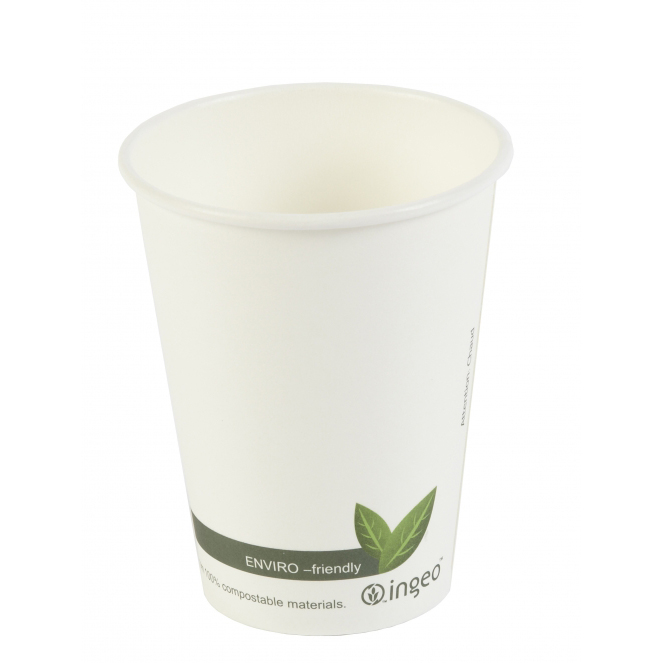
- Benefits: Constructed from plant-based materials, these cups can withstand high temperatures and are commercially compostable.
- Applications: Essential for coffee shops and food vendors prioritizing green products for hot beverages.
4. Ripple Cups
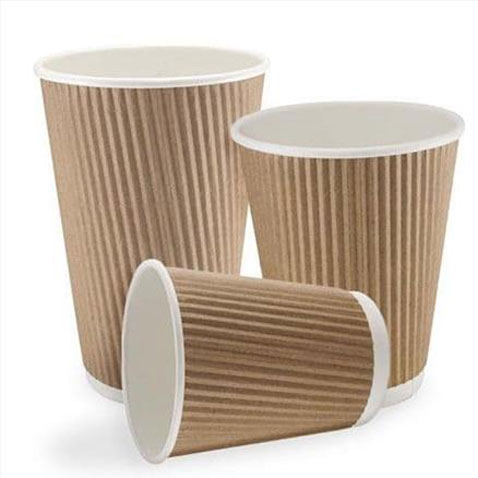
Benefits: These cups have a unique rippled wall that provides extra insulation against heat without the need for a separate sleeve. Made from recycled paper, they are both recyclable and compostable.
Applications: Ideal for serving hot drinks in cafes, food trucks, and at events where customer comfort and eco-friendliness are priorities.
5. Compostable Soup Containers and Lids
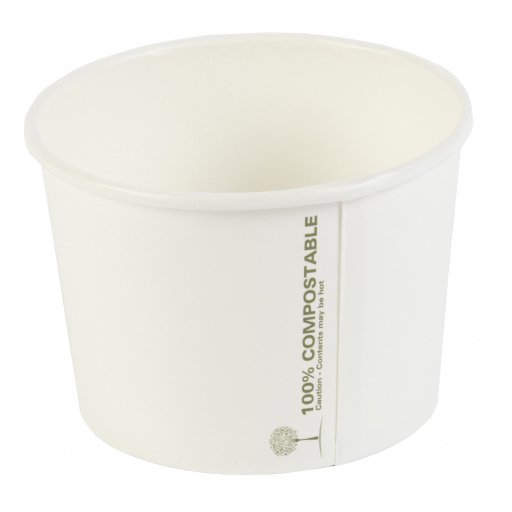
Benefits: These containers are oil and liquid-resistant, maintaining the integrity of hot contents while being fully compostable.
Applications: Ideal for takeaway restaurants and delivery services that need reliable and sustainable options.
6. Disposable Cutlery
.jpg)
Disposable Cutlery for sale from B&P Wholesale
Benefits: Compostable or biodegradable materials are used to create this cutlery, providing an eco-friendly alternative to plastic.
Applications: Great for outdoor food markets, catering events, and anywhere food is served on the go.
7. Paper Straws
.jpg)
B&P Wholesale’s Paper Straws manufactured from a sturdy 3ply paper
- Benefits: Fully biodegradable and available in various styles, paper straws are a practical substitute for their plastic counterparts.
- Applications: An easy switch for bars, restaurants, and cafes looking to reduce plastic waste.
8. Kraft Boxes, Bowls, and Trays
- Benefits: Crafted from recycled materials, these packaging options are sturdy and aesthetically pleasing, suitable for branding.
- Applications: Versatile enough for both retail and food industry use, they are ideal for packaging a range of products.
9. Biodegradable Fruit Punnets
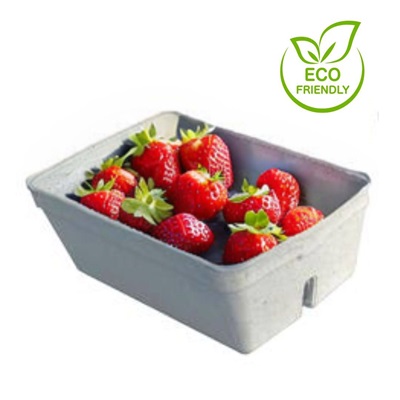
- Benefits: These punnets break down naturally and offer a sustainable solution for packaging and displaying fresh produce.
- Applications: Best for grocery stores and markets that want to showcase their commitment to sustainability.
10. Seaweed Packaging
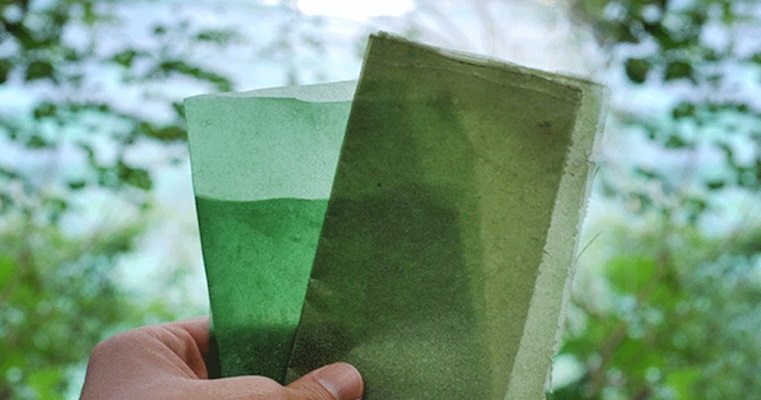
Photo credit: Source Green Co
- Benefits: Seaweed is an abundant and fast-growing resource that produces biodegradable packaging, reducing reliance on traditional plastics.
- Applications: Suitable for wrapping both dry and wet foods, seaweed packaging is innovative for markets seeking unique sustainable solutions.
11. Mushroom Packaging

Photo credit: Natura Mushroom
Benefits: Made from mycelium and agricultural waste, mushroom packaging is fully compostable and requires less energy to produce than conventional packaging materials.
Applications: Effective for shipping and storing fragile items due to its natural cushioning properties.
At B&P Wholesale, we have rigorously selected the best eco-friendly materials, drawing on our long-standing relationships with some of the UK’s leading manufacturers to offer products that do not compromise on quality or sustainability.
These materials are not only environmentally friendly but are also increasingly cost-effective as more advancements are made in recycling technologies.
Best Sustainable Packaging for Non-Food Products
Choosing the best sustainable packaging options for non-food products involves considering materials that are environmentally friendly, effectively protect the product, and align with consumer expectations for sustainability. Here are some of the top sustainable packaging materials and strategies that are well-suited for non-food products:
1. Recycled Paper and Cardboard
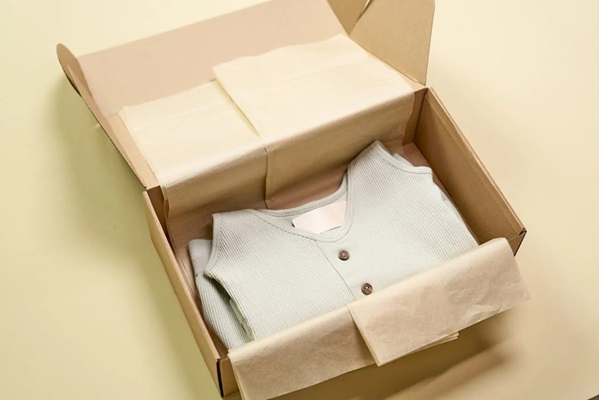
Source: Pexels
One of the most commonly used and highly recyclable materials, recycled paper and cardboard are ideal for a wide range of products, from electronics to apparel. These materials are biodegradable and can often be sourced locally, reducing transportation emissions.
Made from three layers of kraft paperboard, these boxes are easily broken down by natural elements like light and moisture, thanks to their sulfate and fiber content. Their structure includes flutes which not only provide excellent resistance to crushing but also ensure an impressive strength-to-weight ratio, making them ideal for shipping large or bulky items.
2. Corrugated Bubble Wrap
.jpg)
Photo Credit: All-Green Amazon
Made from upcycled corrugated cardboard, this type of bubble wrap is an excellent alternative to plastic bubble wrap. It provides good cushioning for fragile items and is both recyclable and biodegradable.
3. Mushroom Packaging
This innovative material is made from mycelium, the root structure of mushrooms, and agricultural waste. Mushroom packaging is biodegradable and compostable and can be grown into custom shapes, making it suitable for protective packaging for delicate items.
4. Bioplastics
While bioplastics are derived from renewable resources like corn starch, sugarcane, and cassava, their biodegradability varies. They are useful for products that require a moisture barrier but should be chosen carefully based on the end-of-life scenario (compostable in industrial facilities, for instance).
5. Jute and Burlap

These materials are made from natural fibers and are highly durable and reusable. Jute and burlap are suitable for making eco-friendly bags and wraps for products such as clothing, books, and other retail items.
6. Pulp Packaging
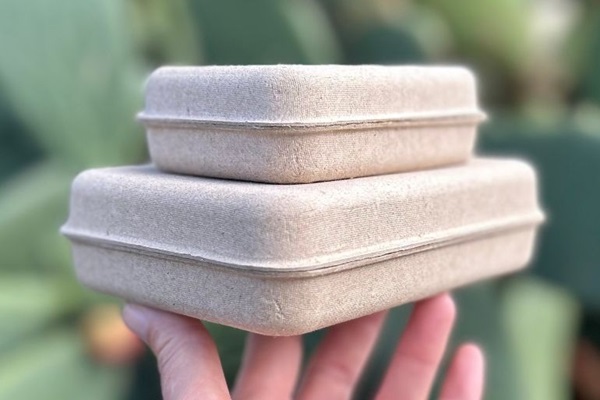
Photo Credit: SPI
Pulp packaging is made from recycled paperboard and cardboard and is molded to form fit around products. This type of packaging is particularly useful for electronics and other items that need protection from impacts during shipping.
7. Air Pillows Made of Recycled Materials
Air pillows provide excellent protection and are lightweight, which helps reduce shipping emissions. Those made from recycled materials offer a sustainable choice and can be recycled again after use.
8. Biodegradable Packing Peanuts
Offering an eco-friendly alternative to synthetic packing peanuts, biodegradable options are made from natural materials like cornstarch, which dissolve in water. This characteristic makes disposal easy and environmentally friendly, as they can be washed away without harming aquatic ecosystems. Biodegradable packing peanuts provide excellent protection for shipping fragile items and are an ideal choice for businesses committed to sustainable packaging solutions.
Innovative Packaging Solutions for Specific Business Types
Tailoring your packaging approach to the specific needs of your business type can significantly enhance both your sustainability impact and customer satisfaction. Here are some optimized solutions for various sectors:
1. Eco-Friendly Food Containers Wholesale:
For businesses that distribute or sell food products in bulk, using compostable or biodegradable containers drastically reduces the environmental impact of your operations.
- Applications: Ideal for wholesalers and distributors who supply to restaurants, cafes, or retail stores, ensuring that the packaging can be either composted or biodegraded, minimizing landfill waste.
2. Eco-Friendly Packaging for Restaurants:
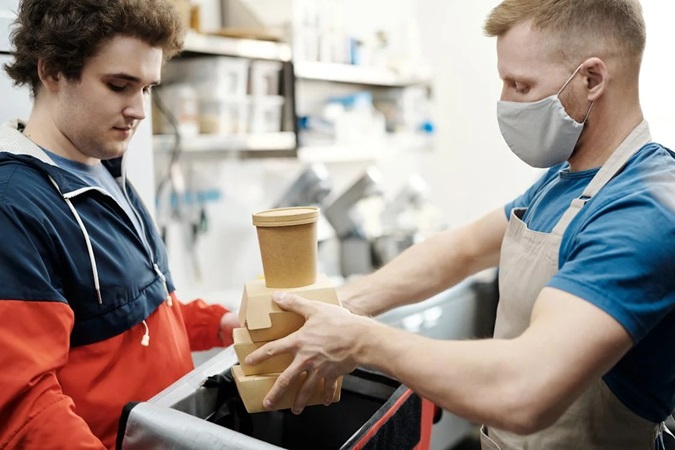
Source: Pexels
Restaurants can elevate their brand and appeal to eco-conscious consumers by incorporating packaging that aligns with a green ethos.
Applications: Implement reusable containers for takeaways and recyclable or compostable cutlery and straws. This approach not only reduces waste but also positions the restaurant as a responsible community player, enhancing customer loyalty.
3. Eco-Friendly Food Delivery Packaging:
Benefits: With the rise of food delivery services, the need for sustainable packaging solutions that maintain food quality while minimizing environmental impact is more crucial than ever.
- Applications: Opt for insulated biodegradable bags or containers and recycled paper wraps which are designed to keep food fresh and safe during transit. These materials are both functional and environmentally friendly, meeting the demands of modern consumers.
4. Retail Product Packaging
Retail businesses, particularly those that ship products can gain a competitive edge by using packaging that customers feel good about.
Applications: Use recyclable cardboard boxes, biodegradable packing peanuts, or paper-based cushioning materials to protect goods during shipping. Additionally, incorporating clear labeling on how to recycle or dispose of the packaging materials can enhance the customer's experience and support recycling initiatives.
5. Beverage Packaging Solutions:
Beverage manufacturers and distributors can reduce plastic waste by choosing sustainable packaging alternatives.
- Applications: Biodegradable bottles, recyclable aluminum cans, or plant-based plastic alternatives provide viable options. These materials not only meet regulatory requirements but also cater to the growing market demand for sustainable products.
6. Cosmetics

Source: Pexels
Use packaging that protects against contamination and is also visually appealing to convey brand values.
How to Find and Choose Eco-Friendly Packaging Suppliers
Selecting the right supplier is crucial in maintaining the integrity of your eco-friendly packaging.
Look for suppliers that:
- Have transparent sourcing and manufacturing processes.
- Offer certifications such as FSC (Forest Stewardship Council) or compostability certifications.
- Are willing to provide data on the lifecycle impact of their products.
Building a relationship with suppliers who share your environmental values can ensure consistency in your sustainable practices.
Food Brands with Eco-Friendly Packaging
Across the UK, a growing number of food brands are making significant strides in integrating sustainable packaging into their operations, showcasing their commitment to the environment. These real-life examples not only illustrate the practicality of eco-friendly solutions but also serve to inspire other businesses considering a similar path.
- Who Gives A Crap: Known for their environmentally conscious approach, this company ensures all their product deliveries are carbon neutral. They use plastic-free packaging adorned with playful, engaging messages that resonate well with their customer base, emphasizing that sustainability can be fun and accessible.
- CanO Water: Pioneering in the beverage sector, CanO Water has effectively eliminated single-use plastic by offering water in uniquely resealable cans. This innovative packaging significantly reduces plastic waste and offers consumers a convenient, recyclable option.
- Keep Candles: This eco-conscious brand combats the issue of single-use products by designing candles that serve a dual purpose. Once the candle burns down, the container can be repurposed as a stylish mug. This commitment to sustainability is reflected in their use of natural plant-based waxes and 100% pure essential oils, all packaged in eco-friendly materials.
- For Peat's Sake: Specializing in environmentally friendly peat packaging, this company optimizes its package sizes to make shipments as efficient as possible, minimizing the use of materials while maintaining product integrity.
Cost-Benefit Analysis of Eco-Friendly Packaging
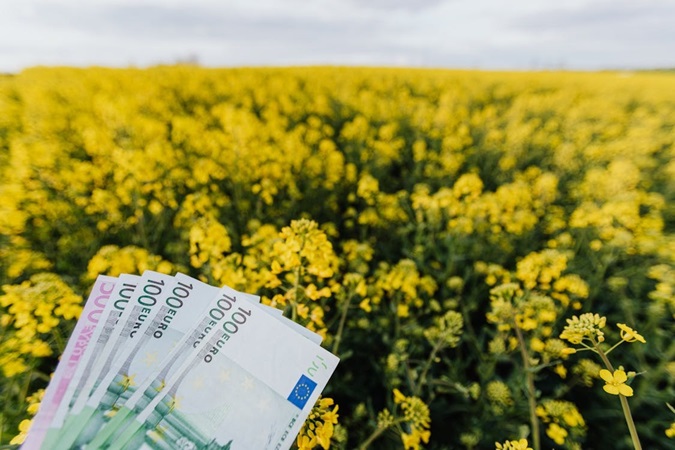
Source: Pexels
When considering the switch to more sustainable packaging, it’s natural to think about the immediate cost implications.
For instance, what would it cost to order 1,000 bagasse meal trays, compared to 1,000 traditional polystyrene trays?
The truth is, it's hard to pin down an exact figure because the cost depends on various factors.
Long-term Benefits vs. Initial Investment
While it's true that the initial costs of adopting eco-friendly packaging can be higher, the long-term benefits often significantly outweigh these initial investments.
Many small businesses find that the improved brand image and customer loyalty, combined with compliance with increasing regulatory demands, lead to substantial returns.
Reducing Costs Through Sustainable Practices
Switching to biodegradable materials, for example, may reduce the fees associated with disposal and recycling, which some municipalities charge based on the type of waste being disposed of.
Consider the example of Ikea, which redesigned its packaging to eliminate unnecessary empty space and now saves €1.2 million annually.
Additionally, the adoption of eco-friendly packaging can lead to reduced waste management fees and can attract incentives from suppliers or local municipalities.
Financial Support for Eco-Friendly Initiatives
Moreover, there may be grants available from local governments or other organizations designed to offset some of the expenses incurred by businesses transitioning to more sustainable packaging solutions.
B&P Wholesale prides itself on offering the best prices in the UK for eco-friendly packaging solutions. We understand the challenges small businesses face and strive to provide high-quality, sustainable packaging options that not only meet regulatory standards but also fit within tight budgets.
Logistical Considerations
Transitioning to eco-friendly packaging presents several logistical challenges. These include alterations in shipping weight, changes in volume, different storage requirements, and concerns about the durability of materials during transport.
For example, lighter, eco-friendly materials can reduce shipping costs but might not provide the same level of protection as traditional materials.
To address these challenges, businesses might consider:
- Conducting pilot tests to find the optimal balance between weight and protection.
- Reevaluating packaging designs to improve efficiency in storage and transport.
- Partnering with logistics companies that specialize in or are familiar with handling eco-friendly materials.
End-of-Life Product Management
Ensuring responsible disposal of packaging involves strategies like encouraging recycling, supporting composting efforts, or implementing take-back programs. Educating consumers on how to properly dispose of packaging is crucial and can be achieved through clear labeling and engaging marketing campaigns.
Businesses might also partner with waste management services to facilitate the proper disposal of their packaging materials.
The Future of Eco-Friendly Packaging
The future of packaging is leaning heavily towards sustainability, driven by consumer demand, technological advances, and global environmental goals. Innovations such as edible packaging, digital printing on sustainable materials, and upcycled waste products are already on the horizon, promising to further reduce the environmental impact of packaging.
Emerging Trends and Technologies
- Looking ahead, several exciting trends and technologies are on the horizon for eco-friendly packaging:
- Materials Innovation: New materials like mycelium-based packaging or algae-derived plastics offer promising sustainable alternatives.
- Digitalization: Incorporating QR codes or augmented reality into packaging can enhance customer engagement and provide transparency. For example, a QR code might link to a webpage detailing the packaging’s lifecycle and recyclability.
Exploring these innovations can provide small businesses with a competitive edge and align them with modern consumer expectations.
Frequently Asked Questions About Eco-Friendly Packaging for Small Businesses
1. What does it mean to be recycled?
Recycling involves processing used materials into new, useful products to prevent waste of potentially useful resources. This process reduces the consumption of fresh raw materials, energy usage, air and water pollution, and greenhouse gas emissions. In the context of packaging, being recycled means that the material has been reclaimed and transformed into something new, which can significantly lessen environmental impact.
2. What are the best eco-friendly packaging options for small businesses in the UK?
Ideal choices include recycled cardboard, bioplastics derived from materials like corn starch, and plant-based packaging from bamboo, sugarcane, or mushrooms. These materials are not only sustainable but also increasingly cost-effective as recycling and manufacturing technologies advance.
3. How can restaurants transition to eco-friendly packaging?
Restaurants can adopt compostable or biodegradable containers for takeaways and use recyclable cutlery. This shift helps align their operations with green principles and meets the expectations of environmentally conscious consumers.
4. What eco-friendly food delivery packaging solutions are available?
Food delivery services can opt for insulated biodegradable bags or recycled paper wraps, which help maintain food quality while minimizing waste.
5. Can you recommend eco-friendly food containers for wholesale purchases?
Businesses in need of bulk food packaging should consider containers made from materials like bagasse and sugarcane-based packaging, which are compostable and reduce environmental impact significantly.
6. How do food lovers respond to eco-friendly packaging?
Consumers who are passionate about food increasingly prefer packaging that is sustainable, such as biodegradable food containers, vegan-friendly, and materials that do not harm the environment. This shift is due to a growing awareness of sustainability issues and a desire to support brands that take responsible actions.
7. Are there specific eco-friendly packaging innovations for food brands?
Food brands can adopt innovative solutions like green food packaging, which includes the use of materials such as plant-based bioplastics, compostable packaging, and recycled content. These innovations not only help the environment but also cater to consumers seeking sustainable options.
8. What should small businesses consider when choosing eco-friendly packaging suppliers?
Key considerations include the transparency of the supplier's sourcing and manufacturing processes, certifications like FSC, and the supplier’s willingness to provide lifecycle impact data. It’s important to partner with suppliers who align with your environmental values to maintain the integrity of your eco-friendly initiatives.
9. What are the benefits of Bagasse and Sugarcane-Based Packaging?
Bagasse and sugarcane-based packaging are excellent eco-friendly options because they are both biodegradable and compostable. Made from the by-products of sugarcane processing, these materials are not only sustainable but also help reduce industrial waste.
10. What defines compostable packaging?
Compostable packaging is designed to break down completely into non-toxic components that can contribute to nutrient-rich compost. This type of packaging typically disintegrates within a specific period under composting conditions and is an ideal choice for reducing landfill waste.
11. What is the difference between eco-friendly packaging and sustainable food packaging?
While both terms are often used interchangeably, "eco-friendly packaging" generally refers to any packaging that is less harmful to the environment, whereas "sustainable food packaging" specifically refers to packaging solutions that support long-term ecological balance in food products.
12. What is the significance of green food packaging?
Green food packaging emphasizes the use of materials and production methods that have minimal environmental impact. It focuses on sustainability, often involving renewable resources and energy-efficient manufacturing processes.
13. How do biodegradable food containers contribute to environmental sustainability?
Biodegradable food containers break down naturally, often using biological microorganisms under specific conditions, which significantly reduces pollution and landfill waste. They are particularly useful in settings where containers can be disposed of in organic waste streams.
14. Why should businesses consider vegan packaging options?
Vegan packaging avoids the use of animal products or by-products, aligning with ethical consumption practices and catering to a market segment that values animal welfare alongside environmental concerns.
15. How can small businesses measure the impact of switching to sustainable packaging?
Small businesses can measure the impact of adopting sustainable packaging through several key metrics:
- Environmental Impact: Assess reductions in carbon footprint and waste production by comparing previous usage of traditional materials to current sustainable practices.
- Cost Efficiency: Monitor cost changes related to packaging, including the potential decrease in waste management expenses and any variations in material costs.
- Customer Feedback:Collect and analyze customer feedback on the new packaging to gauge consumer satisfaction and perceptions of the company’s environmental commitment.
- Sales and Market Share: Track changes in sales or market share since switching to sustainable packaging to determine if it has had a positive effect on business growth.
- Regulatory Compliance: Evaluate how well the new packaging helps in complying with local, national, or international environmental regulations, potentially reducing legal risks and penalties.
- Brand Image: Assess changes in brand image through social media sentiment analysis, media mentions, and other public feedback channels to see how the switch influences public perception.
It's a long journey, but every step counts.
Are you ready to transition to eco-friendly packaging? Evaluate your current packaging solutions and consider how adopting more sustainable practices can benefit your business. Remember, the journey to sustainability is ongoing, and every small change counts. Let’s make a difference together! Have a look at our eco-friendly packaging solutions.